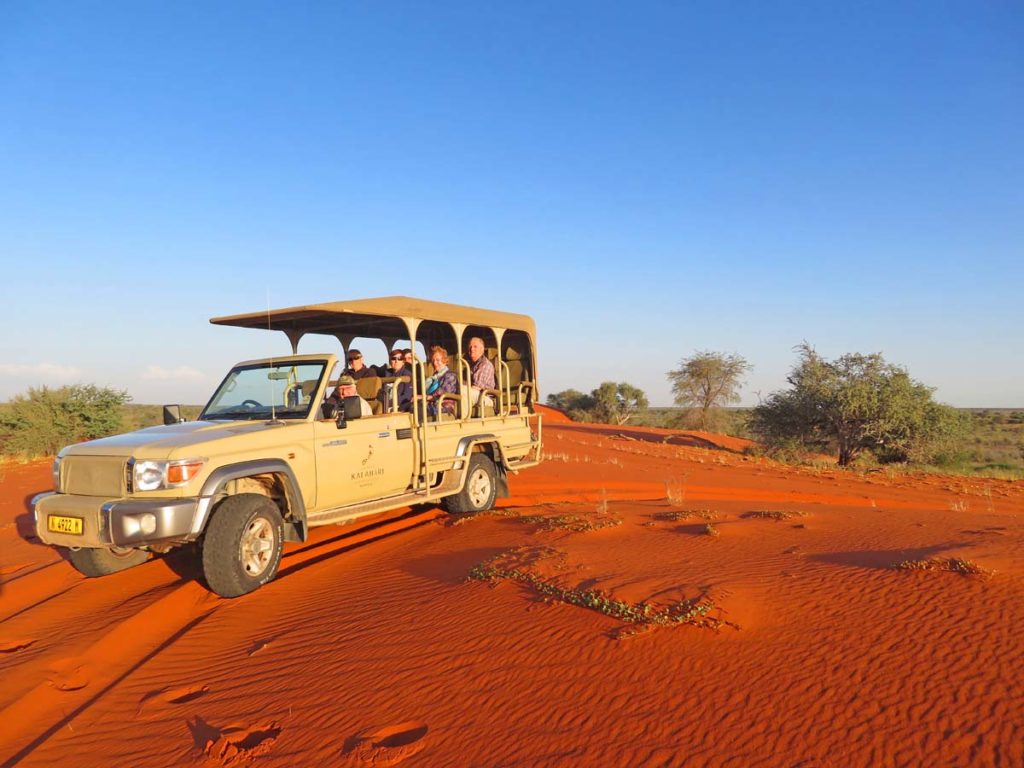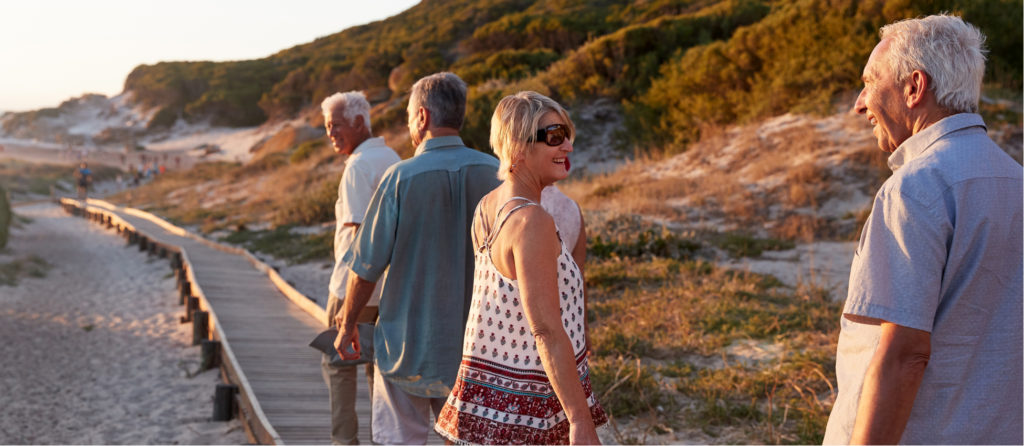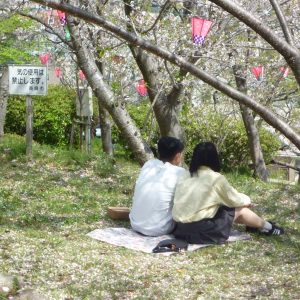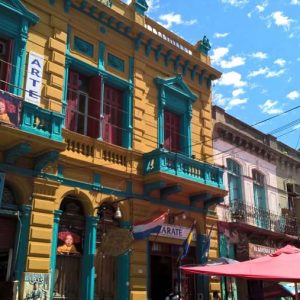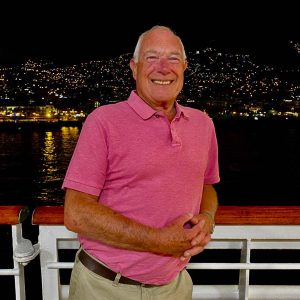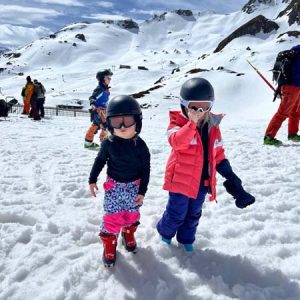Desert and Canyon
At over 1600 metres, Namibia’s capital deserved its name, Windhoek, ‘the windy corner’, and early that morning it was almost deserted. We had a brief look at historic landmarks then we were off on an equally deserted road, meandering around mineral-coloured hills before heading south across the plain.
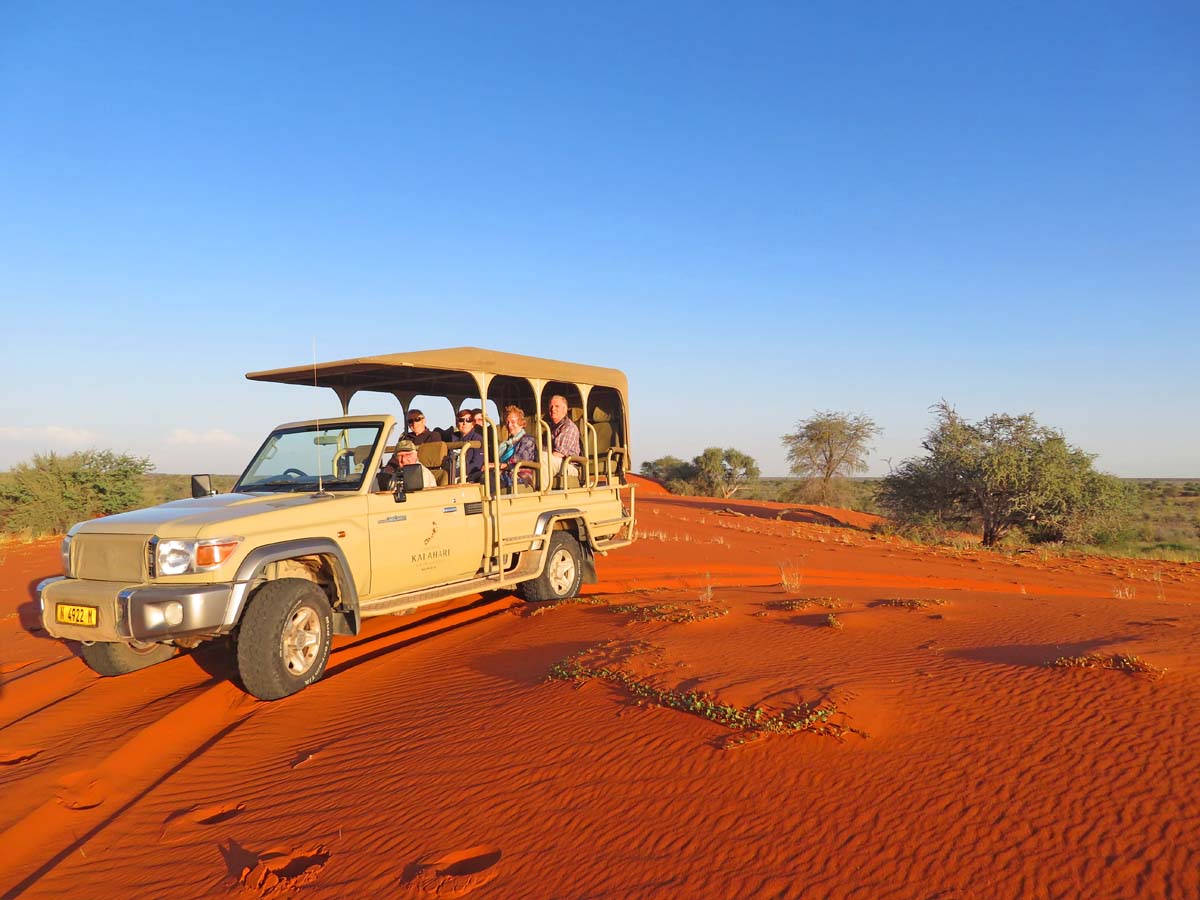 Camelthorn trees popped up here and there, silky bushman grass rustled along the edge and there were small picnic spots and fences on both sides to protect the wild life. We spotted zebras and baboons, hornbills and the huge nests of sociable weaver birds. Red termite mounds rose under the trees and we waved at a couple of donkey and carts, better known as Kalahari Ferrari. We crossed the Tropic of Capricorn, exciting in the middle of nowhere, then turned off for the Kalahari Anib Lodge on the edge of the desert.
Camelthorn trees popped up here and there, silky bushman grass rustled along the edge and there were small picnic spots and fences on both sides to protect the wild life. We spotted zebras and baboons, hornbills and the huge nests of sociable weaver birds. Red termite mounds rose under the trees and we waved at a couple of donkey and carts, better known as Kalahari Ferrari. We crossed the Tropic of Capricorn, exciting in the middle of nowhere, then turned off for the Kalahari Anib Lodge on the edge of the desert.
This was a lovely place with cosy rooms, swimming pool and palm trees and our first safari through the bush then up the nearby dunes for a complimentary sundowner. I didn’t notice much about the drinks for the scenery kept me spellbound, the sun glinting through a lonely tree, the burning red sand and below us, in the darkening scrubland, the haunting shadows of blue wildebeest, courting ostriches and flocks of gambolling springboks watched by a long-horned oryx, a national emblem.
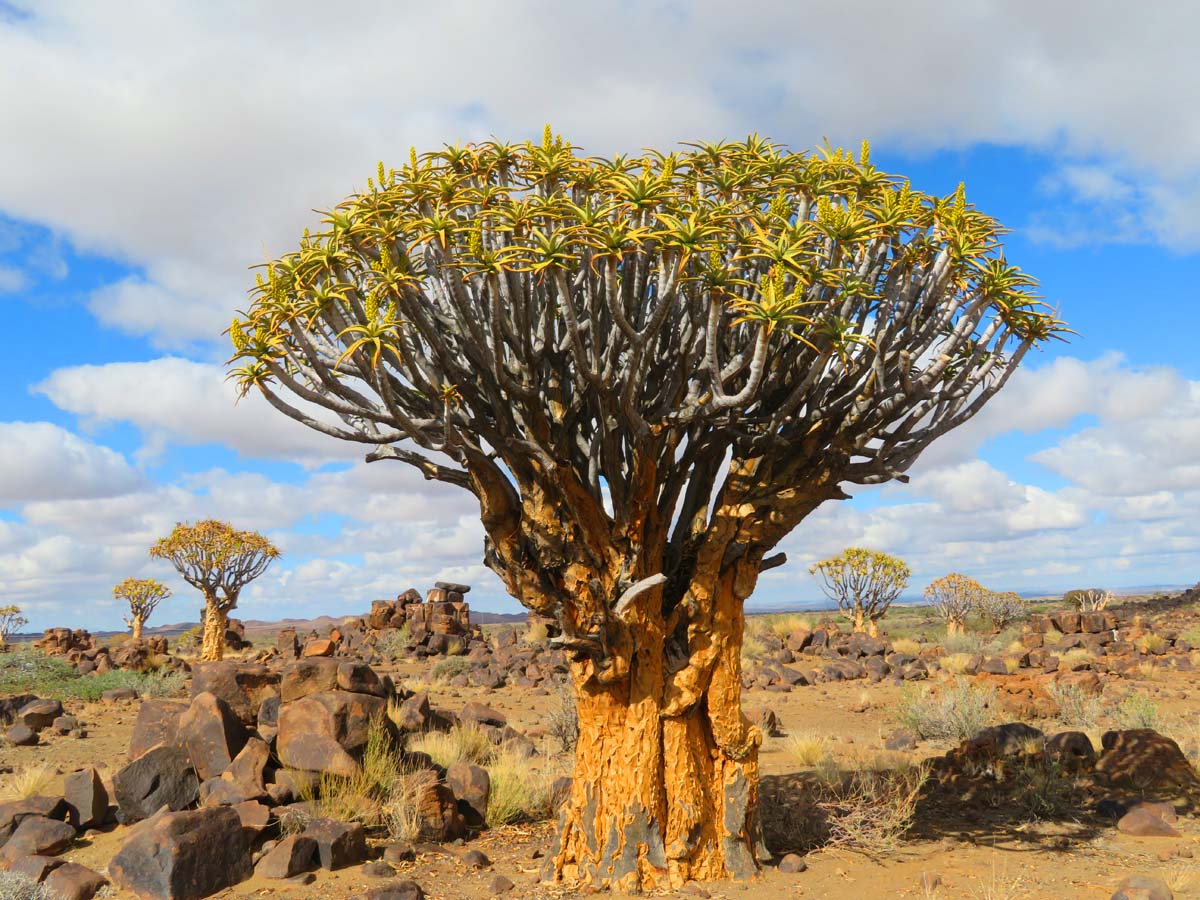 This was our only glance of the Kalahari desert – there’s only a small strip in Namibia – and soon after dawn, we set off for the 400 km drive to the greatest canyon in Africa near the southern border. We followed a single railway track for much of the day and felt like tiny ants crawling through vast empty steppes under the blue African sky. The only break was a daunting walk through the quiver forest where strange ‘upside down’ trees grow among piles of rocks like a scene from an alien land. Arrow containers (or quivers) were once made from the wood, hence the name. It’s a national monument.
This was our only glance of the Kalahari desert – there’s only a small strip in Namibia – and soon after dawn, we set off for the 400 km drive to the greatest canyon in Africa near the southern border. We followed a single railway track for much of the day and felt like tiny ants crawling through vast empty steppes under the blue African sky. The only break was a daunting walk through the quiver forest where strange ‘upside down’ trees grow among piles of rocks like a scene from an alien land. Arrow containers (or quivers) were once made from the wood, hence the name. It’s a national monument.
‘Canyon Village’, our resort, greeted us with thatched roofs garlanded in flowers but beyond the public area, our chalets melted into a rugged landscape of rocks and cliffs. It was awesome, especially at sunset. “Keep your eyes peeled, locals on the move”, said a sign picturing an oryx, so we knew that even after dark we wouldn’t be alone in the wilderness.
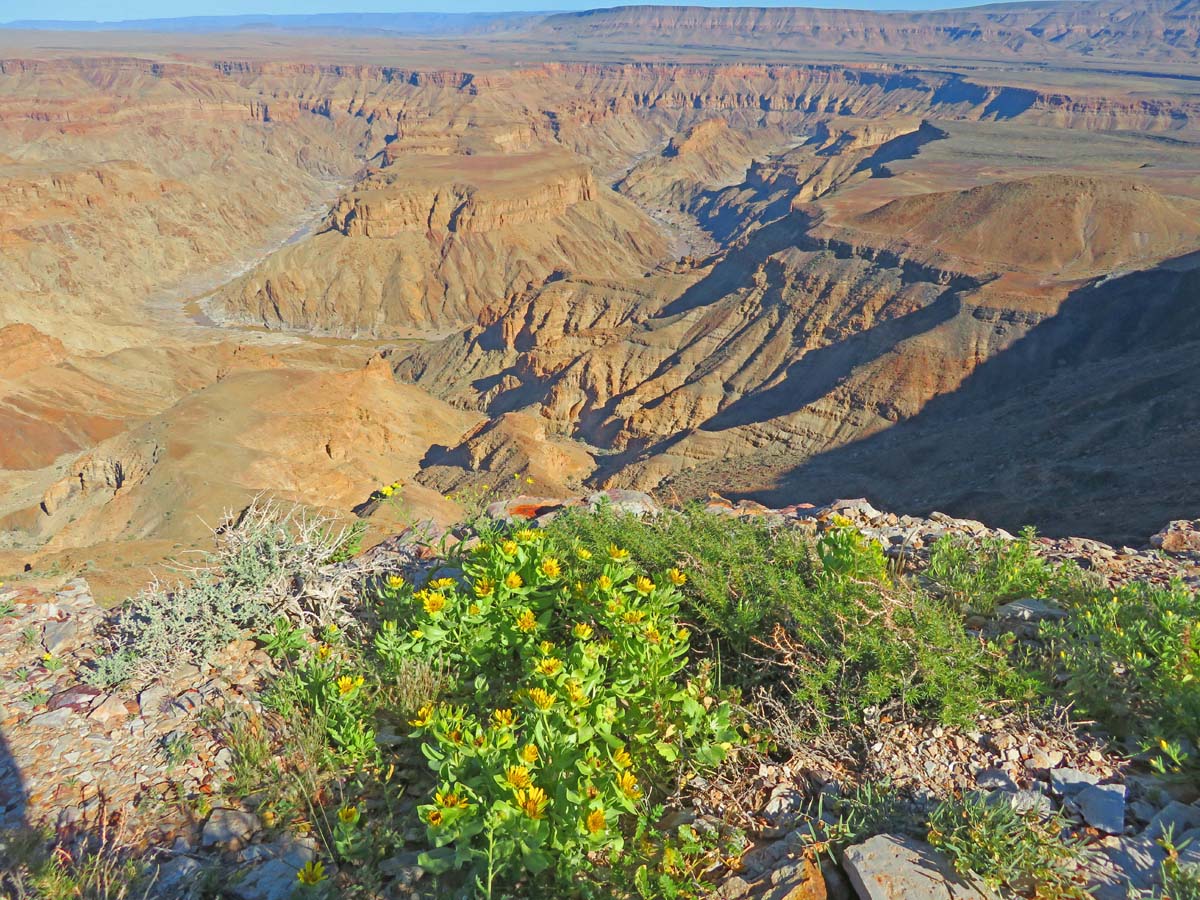 The next day it was only a short drive to the mighty Fish River Canyon. Stretching 160 km, up to 27 km across and 550 metre deep, it is second only to the Colorado and part of a Transfrontier Park (or ‘peace park’) with South Africa. The five-day arduous trek at the bottom of the gorge was not for us but the walk along the ridge was superb, on a breezy up and down path with fantastic views from one viewpoint to the next. No parapets, no commercial outlets, just a pristine natural wonder which simply took your breath away. I didn’t see any chirping scorpions or vervet monkeys, but I loved the flowers clinging to the very edge, yellow devil’s thorns, blue lobelia, fire lilies, and far below the green ribbon of water struggling through this dramatic no man’s land.
The next day it was only a short drive to the mighty Fish River Canyon. Stretching 160 km, up to 27 km across and 550 metre deep, it is second only to the Colorado and part of a Transfrontier Park (or ‘peace park’) with South Africa. The five-day arduous trek at the bottom of the gorge was not for us but the walk along the ridge was superb, on a breezy up and down path with fantastic views from one viewpoint to the next. No parapets, no commercial outlets, just a pristine natural wonder which simply took your breath away. I didn’t see any chirping scorpions or vervet monkeys, but I loved the flowers clinging to the very edge, yellow devil’s thorns, blue lobelia, fire lilies, and far below the green ribbon of water struggling through this dramatic no man’s land.
How could we possibly beat this? Well, it was my first trip to Namibia and little did I know about this amazing country.
“Tomorrow it’s a nine-hour drive”, said the guide, “that will take us to the Namib desert”.
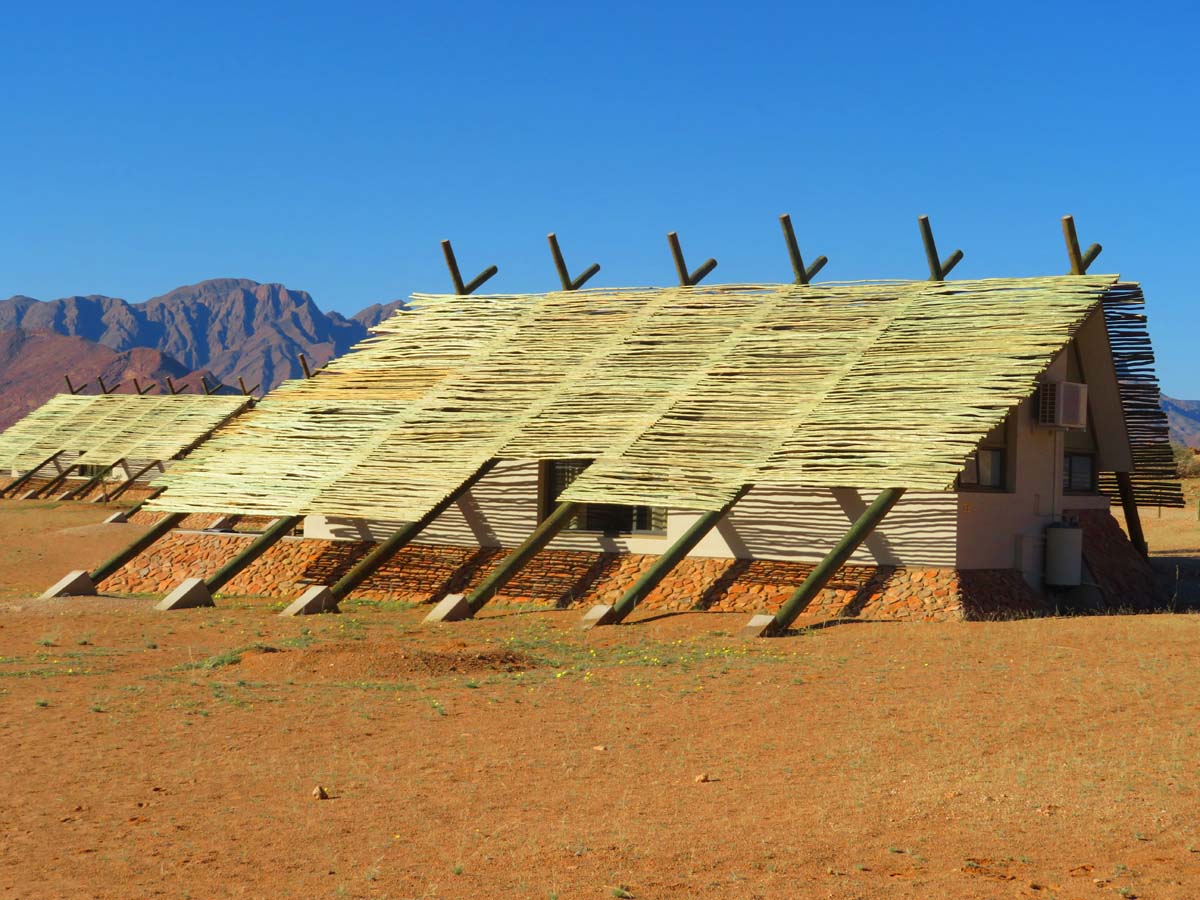 Bumping along gravel roads, feasting on the ‘best apple pie in Namibia’ in a roadside village and crossing the Tsaris Pass with spectacular mountain views were the day’s highlights. Then we reached the ‘Desert Quiver Camp’, totally isolated, a scattering of beautiful huts with big sloping roofs hugging the base of the rocks. Wild life roamed freely in the grounds and the starlit night was full of mysterious sounds.
Bumping along gravel roads, feasting on the ‘best apple pie in Namibia’ in a roadside village and crossing the Tsaris Pass with spectacular mountain views were the day’s highlights. Then we reached the ‘Desert Quiver Camp’, totally isolated, a scattering of beautiful huts with big sloping roofs hugging the base of the rocks. Wild life roamed freely in the grounds and the starlit night was full of mysterious sounds.
We left at the crack of dawn for the ‘Sea of Sand’, within the Naukluft National Park and the most extensive coastal desert influenced by fog. In this astounding UNESCO site, we marvelled at the world’s highest dunes rising towards the brightening sky, their multi-coloured sand speckled with greenery, blinding sun on one side, eerie shadows, on the other. Our challenge was Big Daddy, a fairly easy climb along a narrow ridge until a sandstorm suddenly swept across the land. 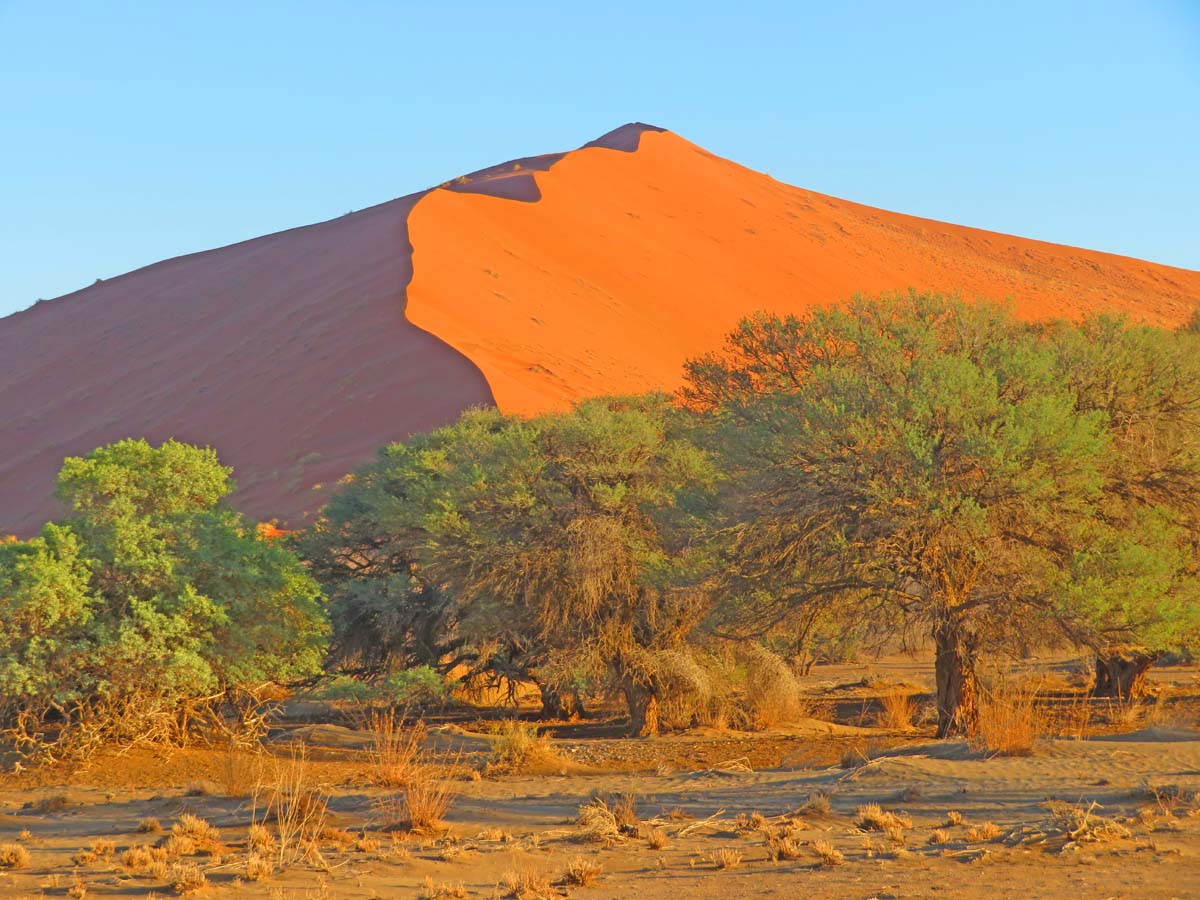 What do you do? Slide down to the white Deadvlei below, a big clay pan sprinkled with scorched skeleton trees. Once again, I was awed by the incredible force of nature and two days later, on a ‘rest day’ in Swakopmund, I booked a 630 km flight, in a light aircraft, along the Skeleton Coast and across the Namib desert. It still haunts my dreams, the dunes spreading inland as far as you could see then towering almost like mountains as they reached the sea, the different shapes and textures, a dark ravine, a winding oasis and the ever-changing colours, red, gold, pink, lilac and every shade in between.
What do you do? Slide down to the white Deadvlei below, a big clay pan sprinkled with scorched skeleton trees. Once again, I was awed by the incredible force of nature and two days later, on a ‘rest day’ in Swakopmund, I booked a 630 km flight, in a light aircraft, along the Skeleton Coast and across the Namib desert. It still haunts my dreams, the dunes spreading inland as far as you could see then towering almost like mountains as they reached the sea, the different shapes and textures, a dark ravine, a winding oasis and the ever-changing colours, red, gold, pink, lilac and every shade in between.
Northern Wonders
Half-way through the Grand Tour of Namibia, we enjoyed a short break in Swakopmund, a pretty seaside resort even though the mist drifted in from the ocean for most of the day. We did see the flamingos in nearby Walvis Bay and lots of seals when we set off on a cruise, which included a local oyster feast. That was delicious, but I was quite happy to leave the next day, back to sunny skies as we headed north to Damaraland.
Driving across the gravel plains of Erongo, we looked out to the dramatic mountains rising on the horizon, the ‘Matterhorn of Namibia’ on one side and on the other the Brandberg range reaching 2573 metres, the highest point in the country. But scenery aside, the land of the Damara people has plenty to offer, especially in Twyfelfontein, Namibia’s oldest World Heritage site, with over 2000 ancient rock engravings scattered across the sandstone hills. We scrambled up the slopes, gazing at pictures of giraffes, rhinos and more, and most famous of all, a shaman in a trance turned into a lion. 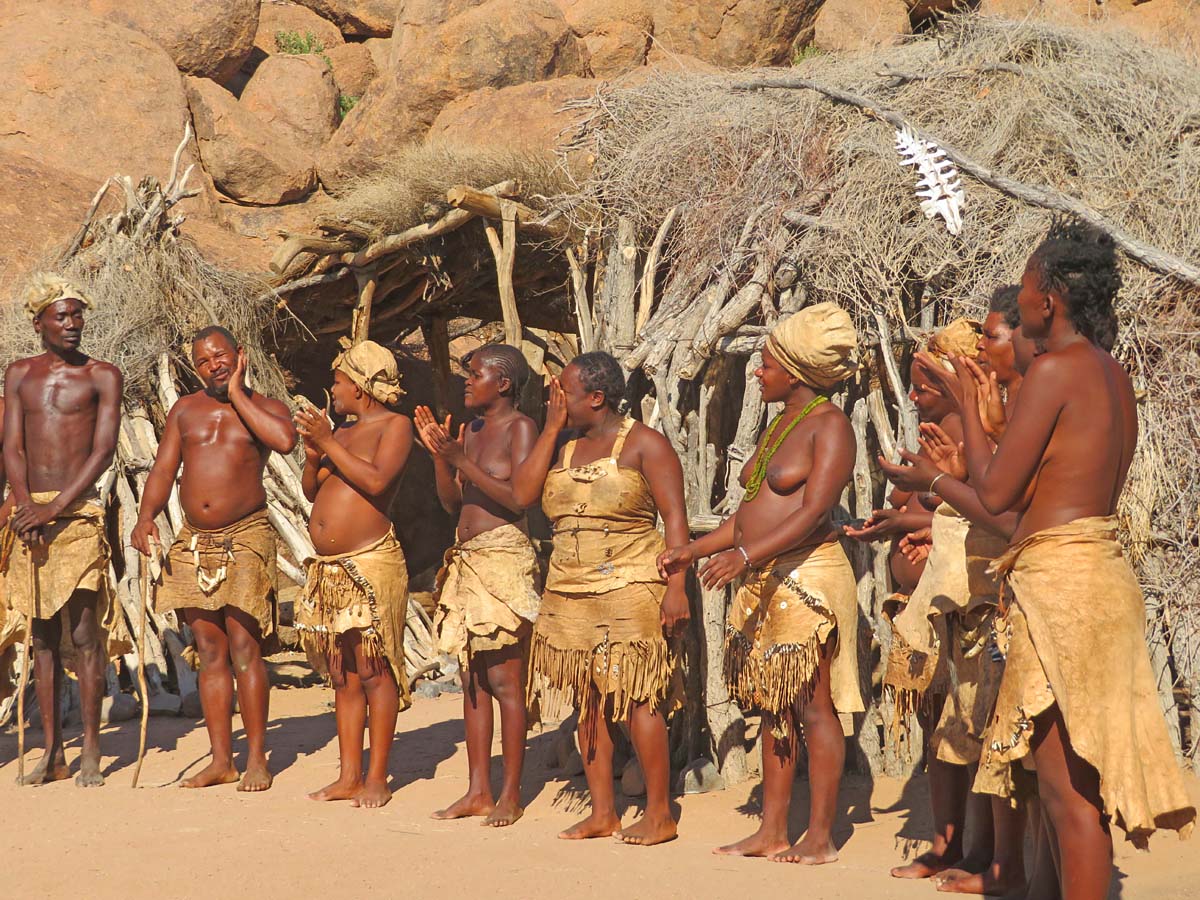 Then in the Damara Living Museum, locals in tribal dress showed us how to clean goat skins, light a fire, dance and communicate in click language. Not easy… That night we stayed in the Mopane lodge, named after the local trees, where every guest cottage had a herb and vegetable garden.
Then in the Damara Living Museum, locals in tribal dress showed us how to clean goat skins, light a fire, dance and communicate in click language. Not easy… That night we stayed in the Mopane lodge, named after the local trees, where every guest cottage had a herb and vegetable garden.
The next day took us to a petrified forest then on to Palmwag along a roller coaster road where we came across elephant tracks and giraffes peeping through the trees. We spotted three desert lions, just across a ravine, and we slept in tented huts, with a horn by the bed in case we needed help.
Now we were ready to explore the Etosha National Park, the ‘great white place’ named after a salt pan so large it can be seen from space. It covers 23% of the park, a white powdery desert for much of the year but attracting pelicans and flamingos during the summer rains. Beyond the pan, open grasslands, savanna shrubs and woodlands provide for a rich variety of wild life, 114 species of mammals, 340 species of birds plus reptiles and amphibians.
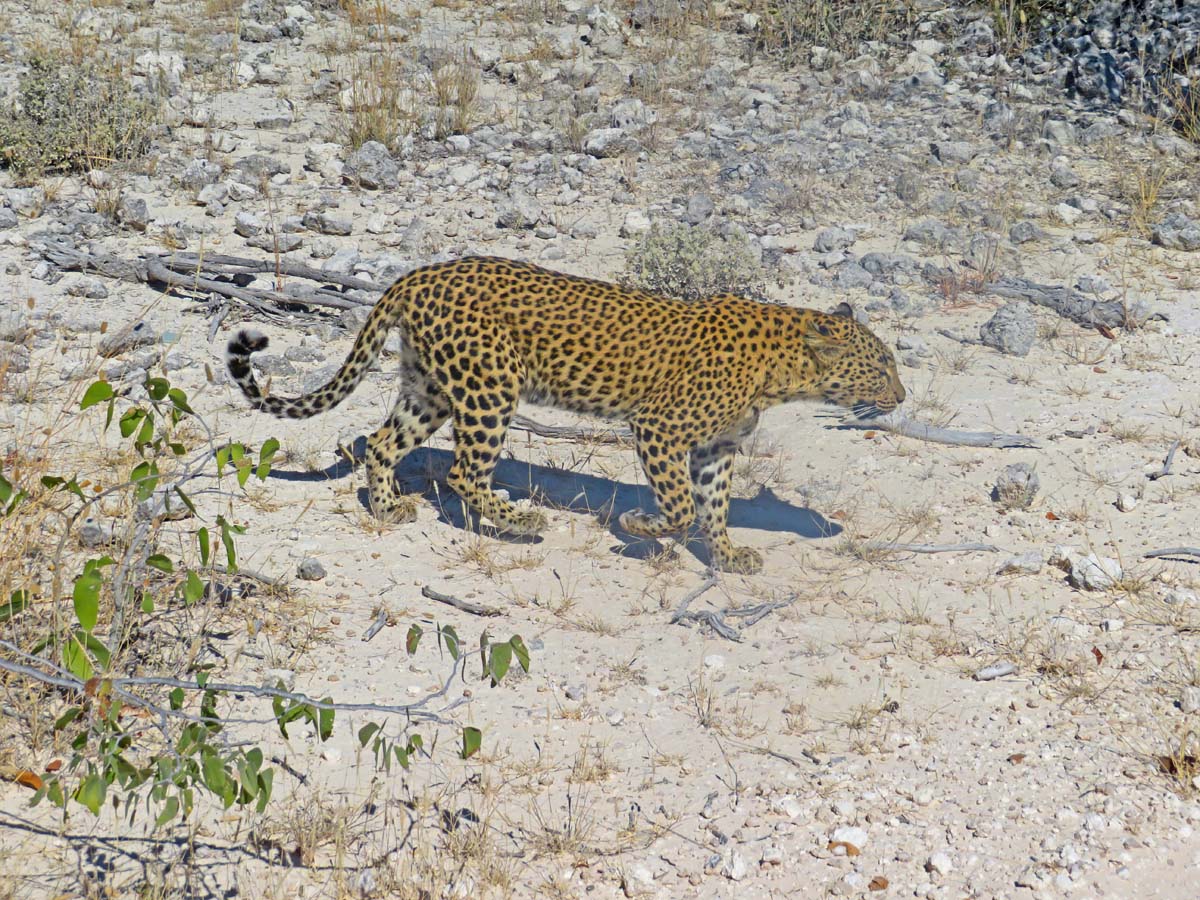 Tingling with anticipation, we entered through the west gate and made our way to the nearest waterhole. Wow! Antelopes, zebras, ostriches, elephants, giraffes, they were all there, waiting for their turn to drink, no squabbling, no rush, so different from humans. Of course, there would be hunting and killing at times, but this felt like nature as it was meant to be. Later when the sun set over the Okaukuejo lodge, we gathered around the softly lit waterhole and watched in silence, giraffes silhouetted in the dying light, zebras, a herd of closely-knit elephants and when the full moon rose in a starry sky, seven rhinos came along, including a couple and their young. We couldn’t have dreamed of a more enchanting evening.
Tingling with anticipation, we entered through the west gate and made our way to the nearest waterhole. Wow! Antelopes, zebras, ostriches, elephants, giraffes, they were all there, waiting for their turn to drink, no squabbling, no rush, so different from humans. Of course, there would be hunting and killing at times, but this felt like nature as it was meant to be. Later when the sun set over the Okaukuejo lodge, we gathered around the softly lit waterhole and watched in silence, giraffes silhouetted in the dying light, zebras, a herd of closely-knit elephants and when the full moon rose in a starry sky, seven rhinos came along, including a couple and their young. We couldn’t have dreamed of a more enchanting evening.
We spent three days in Etosha, driving right across in open safari trucks, most exciting at first light when the bush begins to stir. We didn’t mind the cold – blankets were provided – but I wished I’d packed a woolly hat and gloves. Every waterhole, every track brought something new; black-backed jackals, Damara dik-dik, the smallest antelopes, kudus with long twirly horns, a lioness with her cub, a hyena and most exciting of all, a rarely seen leopard who followed us for a while then stopped right in front of the truck to mark his territory. Then we reached the edge of the salt pan, glistening white and even turquoise in places just like the sea, but that was only a mirage. And guess what we saw? A ‘real’ white elephant covered in salt to protect his skin from the heat.
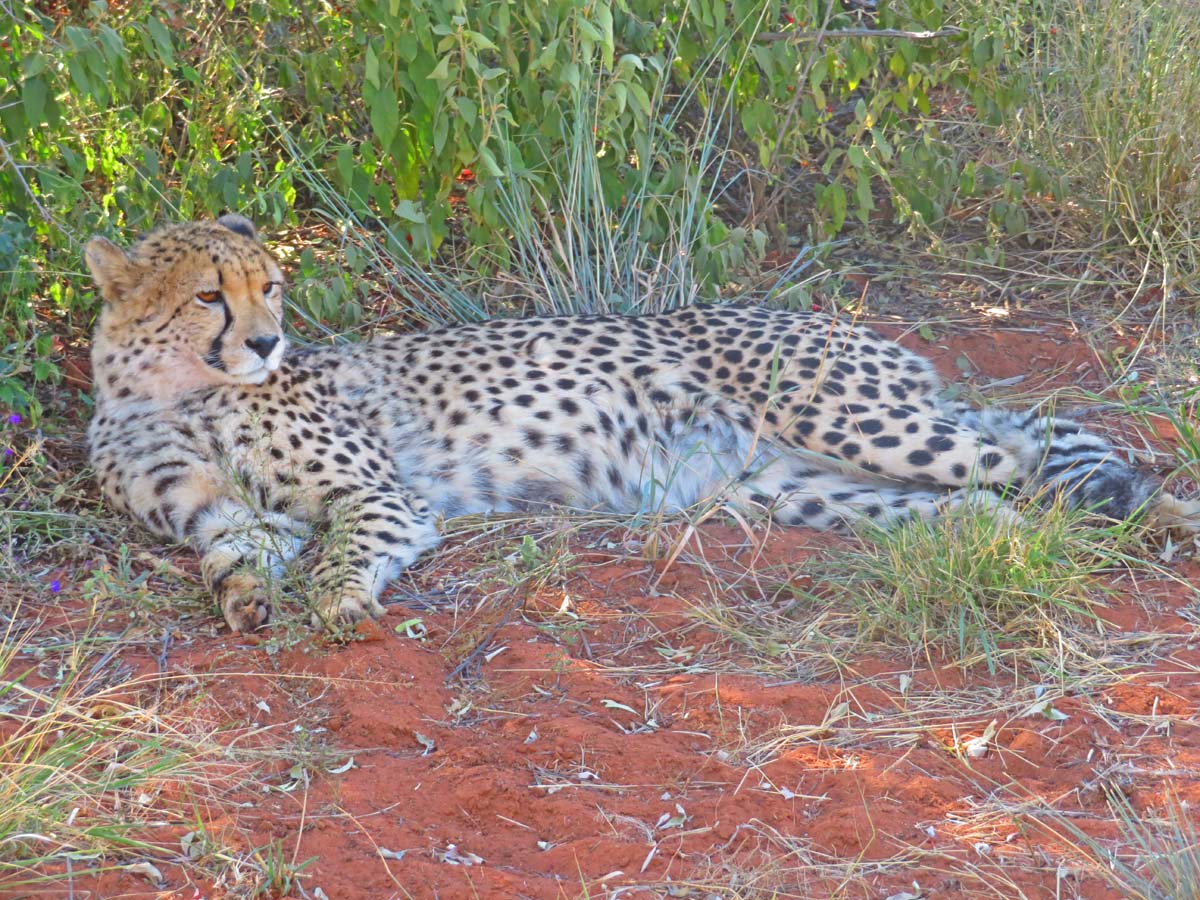 I wished I could have stayed longer in Etosha, but it was time to start heading back towards the capital, stopping en route at the Africat education and refuge centre for injured animals where we came within feet of the most beautiful cheetah. Our last two nights were in the Mount Etjo Safari Lodge, on the edge of a lake in the Okonjati game reserve. There were mountains all around, trees and shrubs and plenty of wild life, including hippos and square-lipped white rhinos grazing in the tallest grass. On our final day we left with a magnificent sunrise over the lake and the call of a lonely hornbill landing on a tree top.
I wished I could have stayed longer in Etosha, but it was time to start heading back towards the capital, stopping en route at the Africat education and refuge centre for injured animals where we came within feet of the most beautiful cheetah. Our last two nights were in the Mount Etjo Safari Lodge, on the edge of a lake in the Okonjati game reserve. There were mountains all around, trees and shrubs and plenty of wild life, including hippos and square-lipped white rhinos grazing in the tallest grass. On our final day we left with a magnificent sunrise over the lake and the call of a lonely hornbill landing on a tree top.
More information
I travelled with Jules Verne on the Grand Tour of Namibia.
Namibia is clean, safe and has excellent guides but if you want to see it all, expect long drives, often on gravel roads.
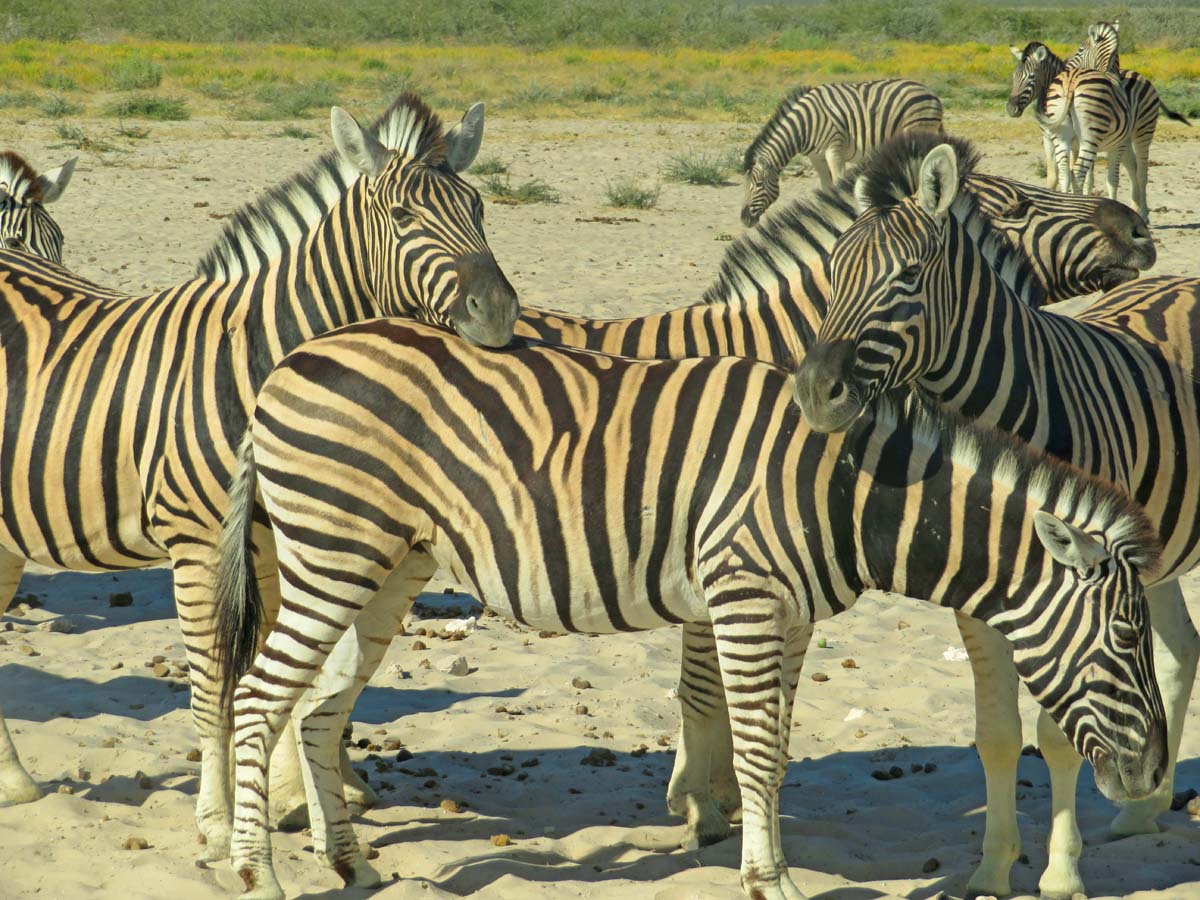 Our accommodation was superb, full of character in stunning locations.
Our accommodation was superb, full of character in stunning locations.
Namibia is roughly 3 times the size of the UK, but has just over two million people. A great destination to discover the natural world, away from it all.
Namibia was the first country in the world to include conservation in its constitution.
Animals have right of way right across the country.
Driving on your own is possible but expert guides constantly in touch with each other will take you the best viewing spots.
